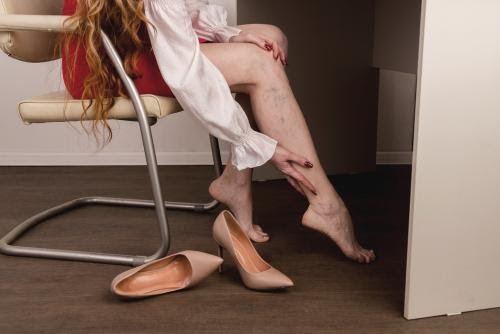Having spider veins might cause you to feel self-conscious about your appearance. While these veins are more of a cosmetic issue rather than a health issue, you don’t have to keep hiding them. In fact, there are treatment options available in the Nashville, TN area. Sclerotherapy can provide an effective and safe way to minimize the appearance of these veins. Find out more about how sclerotherapy works and why you might consider this option for spider vein treatment.
Causes of Spider Veins
Knowing how spider veins occur can help you better understand how treatment works. These veins have a web-like blue or red appearance that is visible right below your skin. You can have spider veins in different areas of your body, but you’re more likely to have them appear on your legs, especially behind your knees. Having increased pressure in your veins can cause spider veins to form. If you have risk factors, you can also have a higher chance of developing these veins. Spider vein risk factors include being a woman, being 40 years old or older, having a family history of spider veins, being overweight, and having a history of deep vein thrombosis. Your risk might also increase if you spend several hours a day sitting down or standing.

What Is Sclerotherapy?
Sclerotherapy is a procedure that helps ease pressure in the affected veins by causing them to collapse. The blood that was pooling in these veins moves to healthier veins in the area instead. After collapsing, the surrounding tissue absorbs the affected veins, which causes them to disappear or fade. This procedure involves having a vein specialist inject a solution into the affected veins. This solution irritates the inside of these veins, which causes them to become swollen. This swelling stops more blood from being able to enter these veins and build up inside them. The treated veins turn into scar tissue and fade.
Good Candidates for Sclerotherapy
How do you know if this type of vein treatment is right for you? You might be a good candidate if you have spider veins and do not have a history of blood clots. If you are pregnant or have recently given birth, you should let your vein specialist know. If sclerotherapy isn’t right for you due to blood clotting issues, pregnancy, recent childbirth or other reasons, your vein specialist can recommend another form of treatment. Keep in mind that sclerotherapy is generally considered a safe way to treat spider veins for most people. If you have any concerns about this procedure, you can discuss them with your doctor.
What to Expect During Sclerotherapy
This procedure is known for being safe and effective for spider veins. When you have the needle inserted into the affected veins, you might feel a very slight stinging sensation, as some people have reported. However, you should not experience any serious discomfort or pain during this procedure. Some people have reported having minor cramping during the needle insertion, but this typically doesn’t last long. This procedure is usually done in an hour or less, and it’s performed on an outpatient basis.
After injecting the solution into the affected veins, your vein specialist will gently apply pressure to the area and massage it. This helps ensure that the solution spreads through the affected vein and prevents blood from entering. You might have a compression pad placed on the treated area. The total amount of time you can expect to spend at the office having this procedure done can vary, depending on how many spider veins you are having treated. Keep in mind that you might need to have multiple sclerotherapy treatments done in order to achieve the best results. This depends on how widespread your spider veins are and how many areas need treatment.
Aftercare
Knowing what to expect after having sclerotherapy done can help ensure a proper recovery. Following all of your aftercare instructions, which your vein specialist will give you, might also improve your results. You should be aware that spider veins won’t fade right away after having this treatment done. You might need to wait a few weeks or more in order to see these veins disappear. When you have this treatment done, you might have some minor side effects afterward. These typically occur at the treated site and can include slight swelling and bruising. You might also have tiny sores, darkened spots or lines in the area, or several small red blood vessels. These often only last for a few days, although it can take a few weeks or more for some side effects to fully disappear. You should let your vein specialist know right away if you experience any other side effects, such as inflammation, blood clots, or air bubbles. These side effects are rare, though.
Can I walk after sclerotherapy?
You should be able to walk around within a short time after your procedure. Walking may lower the risk of having blood clots develop. You should also plan to wear compression stockings for a couple of weeks after your procedure since this helps maintain pressure on the affected veins. This pressure helps prevent blood from getting into these veins. You should ask your doctor about doing regular activities after your procedure. You might be able to drive home, but you should find out whether or not you should arrange a ride home from the office if needed. You’ll most likely be asked to avoid doing intense or strenuous physical activities for a couple of weeks after having sclerotherapy. You might also need to avoid exposing the affected areas to sunlight.
When you have this type of vein treatment done, you might need to come in for a follow-up visit. This is done to ensure that the treated site has properly healed and to see if you need to have additional treatments done for better results. Keep in mind that you’ll normally need to wait for six weeks or more before you’re able to have more sclerotherapy treatments done.
If you’re looking for vein treatment in Tennessee, please contact The Vein Centre for more information. We provide safe and effective treatments, including sclerotherapy, in the Mt. Juliet, Belle Meade and Nashville, TN areas.



